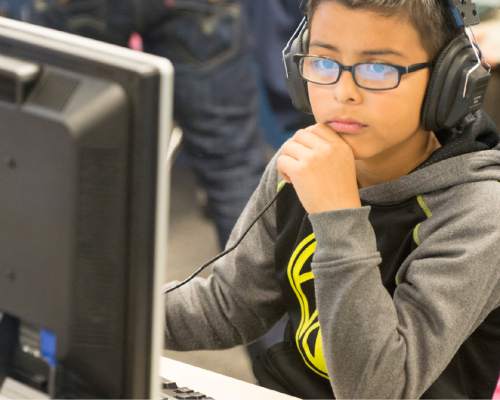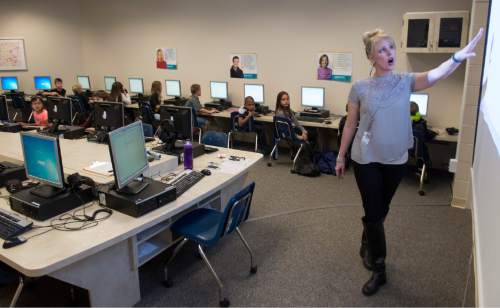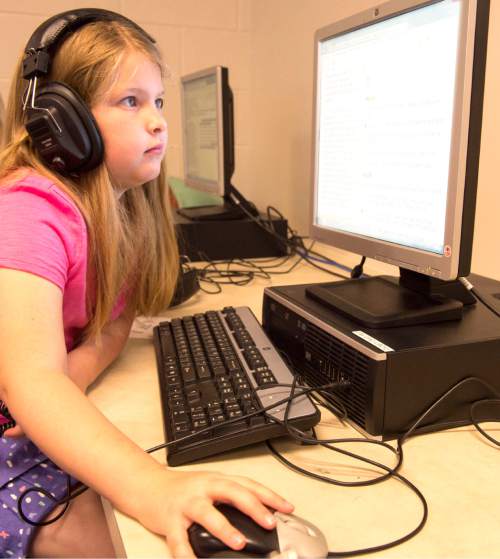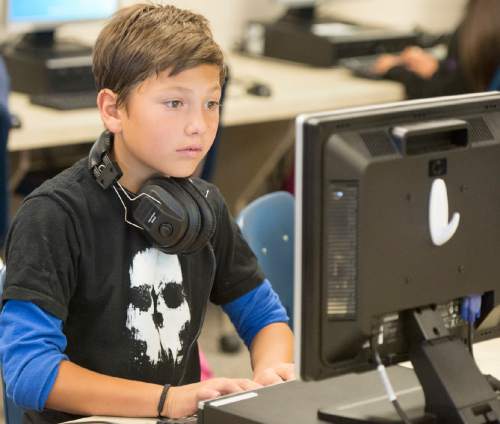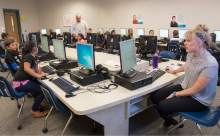This is an archived article that was published on sltrib.com in 2015, and information in the article may be outdated. It is provided only for personal research purposes and may not be reprinted.
The debut of Utah's Student Assessment of Growth and Excellence (SAGE) testing system last year produced a bump in the number of public school students who sat out statewide testing.
But now, with the second round of the computer-based SAGE tests either underway or gearing up in Utah schools, administrators say the number of excused students is holding steady.
As of early this week, fewer than 1 percent of students had opted out of testing in Granite, Canyons, Murray and Salt Lake City school districts.
Those numbers are preliminary and subject to change as SAGE testing continues. But the fervor that accompanied SAGE testing last year seems to have died down, school administrators say.
"We don't have the noise about it that we had last year," said Granite School District assessment director Rob Averett. "I think some [parents] are letting their kids come back into the system."
With hundreds of thousands of students taking the test in 2014, Averett said, Utah parents have seen that SAGE is not the frightening federal program it was often portrayed to be.
Parents object to SAGE for a number a reasons, but chief among them is opposition to the Common Core State Standards — on which the math and English portions of SAGE are based — and a general resistance to standardized testing.
Some school districts' opt-outs have fallen.
So far this year, 2 percent of Alpine School District students have bypassed testing, down from 3 percent last year, according to spokesman John Patten.
Testing will start in earnest for the district next week, but Alpine administrators don't expect the number of students sitting out tests to surpass last year's rates.
"Last year, we really didn't know what the SAGE test would look like," Patten said. "We just know more this year about the usefulness of the data and what this test actually measures."
But other districts still have more students declining to take the tests.
Based on preliminary numbers, Jordan School District managers have seen a slight uptick in the district's opt-out percentage — from 1.1 percent last year to 1.4 percent this year, according to spokesman Steve Dunham.
"One more year," Dunham said, "and we'll see if we have a trend or if it's flattening out."
Final participation numbers will not be reported to the Utah Office of Education until after SAGE testing concludes in May. And some districts, including Davis, have not yet started collecting individual school opt-out numbers.
The SAGE test was developed specifically for Utah. It replaces traditional pencil and paper testing formats with a computer-based system that adapts to the skill level of an individual child.
But the test has generated pushback from parents worried about SAGE's ties to the Common Core and federal education oversight generally.
Utah parents aren't alone in their skepticism.
Some state lawmakers have questioned the increased use of standardized testing in schools and have called for a shutdown of SAGE. But lawmakers have also used the tests as the basis for a number of accountability measures, including teacher evaluations, school grading and a new school-improvement program approved during the most recent legislative session.
While opt-out numbers are fairly small at traditional public schools, the number of parents pulling their kids out of standardized testing spikes at some charter schools.
In 2014, the statewide opt-out rate for SAGE was 2 percent, with 7.6 percent of charter school students refusing to take the test compared to 1.5 percent of traditional school students, according to data from the Utah Office of Education.
At three charter schools, Pioneer High School for the Performing Arts, Mana Academy Charter School and C.S. Lewis Academy, a majority or near-majority of students opted out of testing in 2014.
With such high opt-out rates at those schools, the SAGE test's comparison of students' performance to those of their classroom and state peers could be invalid.
Administrators at all three schools did not respond to requests for comment Wednesday.
At Ogden's DaVinci Academy, one in three students declined to participate in SAGE testing last year, according to Executive Administrator Fred Donaldson.
But Donaldson said many families opposed to SAGE testing transferred to other schools this year, resulting in just 7 percent of the charter school's students declining to participate in the exams this year.
Donaldson said his faculty is supportive of testing as a means of measuring student achievement. DaVinci Academy students who opt out of SAGE are required to take an alternative assessment that is not subject to Utah's voluntary testing laws.
"For us to show that our program works," he said, "we've got to be able to show the state that students are learning."
SAGE tests students in math, English and science, with each exam lasting 90 minutes and consisting of roughly 45 questions, according to Jo Ellen Shaeffer, assessment director for the Utah Office of Education. Students are also given two 60-minute writing prompts, which contribute to the English portion of their SAGE scores.
A committee of parents is assigned to review testing materials each year to screen for errors and inappropriate content.
Since last year, 12 test questions out of roughly 1,500 have been retired, Shaeffer said.
"That [question] development is happening all the time," she said. "We'll adjust and maybe not use some items in a particular year."
Shaeffer said the initial rollout of the test was met with uncertainty, but she expects concerned parents will become comfortable with SAGE as it becomes commonplace in schools.
"Once parents see what the test is about," she said, "oftentimes they'll change their mind the following year."
One of the leaders of Utah's anti-testing movement is Oak Norton, an education advocate who has written about SAGE testing for the website of Utahns Against Common Core.
Norton said parents have a legal right to withdraw their children from statewide tests, and he questioned the efficacy of standardized assessments.
"[Teachers] know where their students are struggling if they're teaching those kids every day," he said. "They don't need a standardized test, let alone a SAGE test, where no two tests are alike."
In the end, educators say, there probably will always be a small subgroup of Utah parents who pull their children out of testing.
Averett said the state's policy is to support the wishes of parents, which aligns with the philosophy of Utah educators.
"The testing is valuable," he said, "but if they don't want to participate, we're not going to compel them or trick them into it."
bwood@sltrib.com Charter schools with the highest opt-out percentages:
1. 72.7 percent • Pioneer High School for the Performing Arts, American Fork
2. 50.3 percent • Mana Academy Charter School, West Valley City
3. 49.8 percent • C.S. Lewis Academy, Santaquin
4. 33 percent • DaVinci Academy, Ogden
5. 29.1 percent • Pacific Heritage Academy, Salt Lake City




